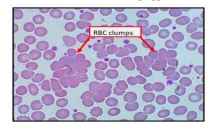Presented in 13th Emirates Pathology, Digital Pathology & Cancer Conference Holiday Inn Dubai, UAE & Virtual
Poster Presenter Name: Dr. Florian Viehweger (Germany)
Global Journal of Pathology & Laboratory Medicine
Unified Citation Journals, Pathology 2024, ISSN 2754-0952
Florian Viehweger1, Maximilian Lennartz1, Niclas C Blessin1, David Dum1, Eike Burandt1, Guido Sauter1, Ronald Simon1, Martina Kluth1, Stefan Steurer1, Till S Clauditz1, Simon Kind1
Keywords: Prostein (P501S), tissue microarray, immunohistochemistry, diagnostic marker, prostate cancer
Biography: Dr. Florian Viehweger
Institute of Pathology, University Medical Center Hamburg-Eppendorf, Hamburg, Germany
Abstract:
Prostein (P501S), also termed solute carrier family 45 member 3 (SLC45A3), is an androgen regulated protein which is preferentially expressed in prostate epithelial cells.
Because of its frequent expression in prostate cancer, prostein was suggested as a diagnostic marker for prostate cancer. In order to comprehensively assess the diagnostic utility of prostein immunohistochemistry in human healthy and neoplastic tissues, a tissue microarray containing 19,202 samples from 152 different tumor types and subtypes as well as 608 samples of 76 different normal tissue types was analyzed by immunohistochemistry. Prostein immunostaining was typically cytoplasmic, granular and perinuclear and predominated in prostate cancer.
Prostein positivity was seen in 96.7% of 419 prostate cancers including 78.3% with a strong staining. In 12,233 extra-prostatic tumors, prostein positivity was observed in 9.8% of cases but only 0.4% had a strong staining. Extra-prostatic prostein positive tumors were found in 50 different tumor categories, 12 of which included at least one strongly positive case.
Extra-prostatic tumors with highest rates of prostein positivity included salivary gland tumors (7.6%-44.4%), neuroendocrine neoplasms (15.8%-44.4%), adenocarcinomas of the gastrointestinal tract (7.3%-14.8%), biliopancreatic adenocarcinomas (3.6%-38.7%), hepatocellular carcinomas (8.1%), and adenocarcinomas of other organs (up to 21%).
In summary, our data provide a comprehensive overview on prostein expression in human cancers. Prostein is a highly sensitive prostate cancer marker occurring in >96% of prostate cancers. Because prostein can also be expressed in various other tumor entities, labeling of a tumor mass as a prostate cancer should not be based on prostein positivity alone.
Tags:
Cancer, Immunodeficiency States, Immunophenotyping, Molecular Diagnostics & Proteomics, Evolutionary Medicine, Functional Identification & Biomarkers, Hematopoietic & other Malignancies, Anatomical Pathology, Clinical Pathology, Dermato Pathology, Forensic Pathology, Hemato Pathology, Histopathology, Molecular Pathology, Surgical Pathology, Histopathology, Chemical Pathology, Hematopathology, Histopathology, Cytopathology, Forensic Pathology, Dermatopathology, Clinical Biochemistry, Infection Control, Cytokines, Enzymology, Endocrinology, Cellular Lineage, Virology, Rheology, Toxicology, Neuropathology, Diagnostic Pathology, Mesothelial Proliferations, Transfusion medicine, Clinical microbiology, Cytogenetics, Molecular Genetics Pathology, Immunopathology, Veterinary Pathology, Anatomical Pathology, General Pathology
Upcoming Conferences;
- 14th Emirates Pathology, Digital Pathology & Cancer Conference
More Details: https://pathology.universeconferences.com/
Submit your abstract/research papers/case- study here: https://pathology.universeconferences.com/submit-abstract/
Attend as a Speaker/Poster/Delegate In-person kindly register here: https://pathology.universeconferences.com/registration/
Attend as a Speaker/Poster/Delegate virtually kindly register here: https://pathology.universeconferences.com/virtual-registration/ - 12th World Digital Pathology & AI UCGCongress
More Details: https://digitalpathology.ucgconferences.com/
Submit your abstract/research papers/case- study here: https://digitalpathology.ucgconferences.com/submit-abstract/
Attend as a Speaker/Poster/Delegate In-person kindly register here: https://digitalpathology.ucgconferences.com/registration/
Attend as a Speaker/Poster/Delegate virtually kindly register here: https://digitalpathology.ucgconferences.com/online-registration/



